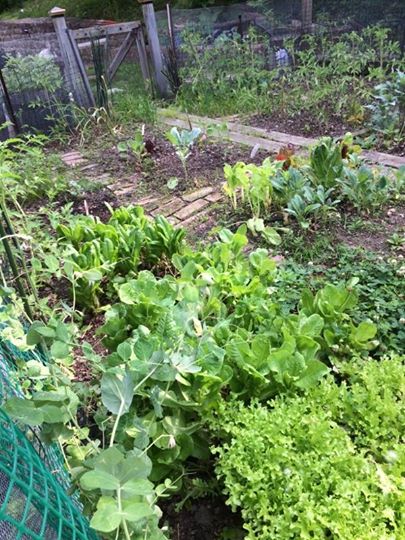I belong to a civic-minded group that decided to volunteer at a food pantry as a team-building exercise. Twelve of us showed up for an afternoon of assembling emergency boxes of food and were was assigned to the assembly line doing what I later realized were the difficult jobs. Other individuals who also signed up for that shift apparently knew the ropes and, arriving ahead of us, had grabbed the easier jobs. This alone wouldn’t be remarkable except they were all at least half our average age.
We could choose to either standing at various stations on the assembly line or open boxes of dried goods and position them for the line-worker who placed them in boxes that rolled by. The low-pressure jobs were to open up flattened cardboard boxes and set them on the belt at the front of the line and close up the full boxes at the end of the line and put them — weighing no more than two grocery bags-full — on a nearby pallet. Those volunteers hobnobbed with the supervisors who chit-chatted in the corner or moved pallets around with a forklift. But we line-workers each had a box of food packages on our right and another on our left: mine were cheesy tuna and bags of cornflakes. The guy ahead of me packed cans of tuna and packages of spaghetti noodles. Others packed cans of beans, peaches, tomatoes, soup and a few other items. Our only time for “team-building” was during our one water break – water was only allowed near the coatrack. As if that weren’t enough, the supervisors played at high volume such entertainment as Wham singing “Wake me up it’s time to go-go.”
While toiling away, I recalled my workout instructors’ recommendations to use both sides of the body equally, so I made a point of twisting and stretching left and right, plus some steps and squats. Though healthier, this slowed me enough that boxes began piling up, like in the “I Love Lucy” episode where Lucy worked so slowly in a chocolate factory that chocolates passed too quickly for her to box so she ate them to catch up. Thinking of eating packets of cheesy tuna made me feel for the recipients, though I knew they’d be happy to have something to eat.

I also thought of Leroy whom I’d met four years ago at a community garden coordinator training. Leroy’s plan was to train gang members to grow food, theorizing that when the electric grid crashed – of which he was certain – gangs would plunder everyone else’s food unless they learned to grow their own.
During the 2020 sequestering, when folks didn’t visit grocery stores, many went to garden centers which enjoyed record sales, especially of vegetable seeds, plants and supplies for growing them. 2021 is continuing the trend. Besides people learning to grow food in containers in small spaces, urban farming is increasingly popular among those who want to shrink the carbon footprint by buying food grown locally. But most importantly, teaching more people to grow fresh food will be better for their health than having to rely on processed food.

Have you read SYLVIE DENIED yet? I invite you to grab your copy, and please leave an honest review when you do.
